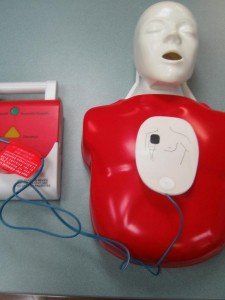Healthcare and ALS training
Healthcare professions are often required to get Advanced Life Support training by their workplace, especially hospitals and other medical facilities. There are two kinds of ALS courses: Advanced Cardiac Life Support for the management of adult cases and Pediatric Advanced Life Support for the management of pediatric cases. For HCPs who work in a clinical setting, training in both courses is a must.
The difference between ACLS and PALS training
The main difference between ACLS and PALS is the victim age group covered. ACLS programs are targeted towards the management of adult victims. PALS programs are targeted towards young children, particularly infants and toddlers. There is a very specific CPR technique for infants, toddlers, and adults – all very different from each other.
The basic structure of both courses are the same, however. They focus on:
- Basic skills – chest compressions, rescue breaths
- Automated external defibrillation
- Commonly used drugs to manage cardiac arrest
- Medication administration
- Use of supportive devices and equipment
- Electrocardiography
Giving CPR to a pediatric patient

Managing cardiac arrest in children is very different from adult management. When children experience cardiac arrest, the reason is typically respiratory in nature. In adults, the most common cause of cardiac arrest is a heart disease. In children, the most common cause of cardiac arrest is respiratory failure. This is quite important because management of a heart attack in children has to target both the respiratory and cardiovascular systems.
When CPR is given to adults, we teach trainees to give more importance to chest compressions. This is because the poor oxygenation of the tissues is not due to a lack of oxygen in the blood (received through respiration) but poor circulation. In children, hypoxia of the tissues is caused by both – low oxygen content in the blood and poor circulation.
Enrolling in PALS training
Although the basics are still taught in a PALS program, they are not the focus of training. With this in mind, we require trainees who apply to a PALS program to have a valid Basic Life Support for HCPs training certificate. There is also a pre-test that the trainee has to pass before he or she can proceed to PALS training.
The PALS program is completed over a span of two days, over 16 hours. Re-certification is much shorter, completed in a single session of 6 hours and 20 minutes or 8 hours and 20 minutes. The difference between the two programs lengths is because of optional stations or lessons that the trainee can choose not to take.
Credentials for PALS training
The PALS training certificate is valid for a total of two years. It can be renewed through a re-certification class as long as the previous credential has not yet expired. If it has already expired, the rescue cannot take re-certification; he or she has to take the PALS training program again. PALS certificates you receive from us will be valid for work and academic requirements throughout the US.
